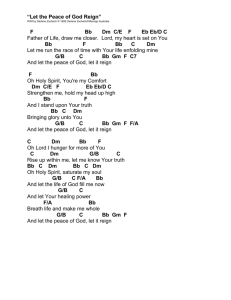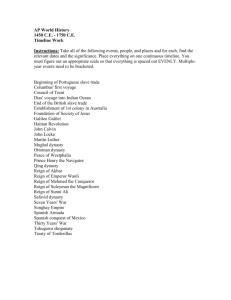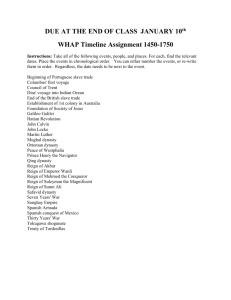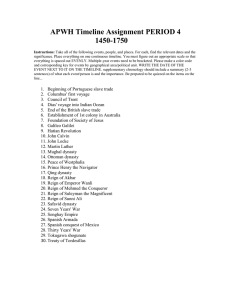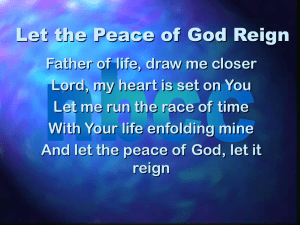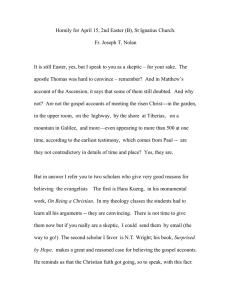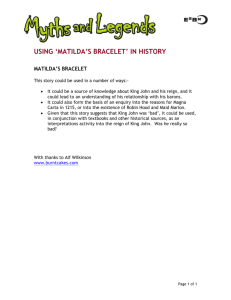Bible 120 New Testament A millennialism Conference on Prophecy
advertisement
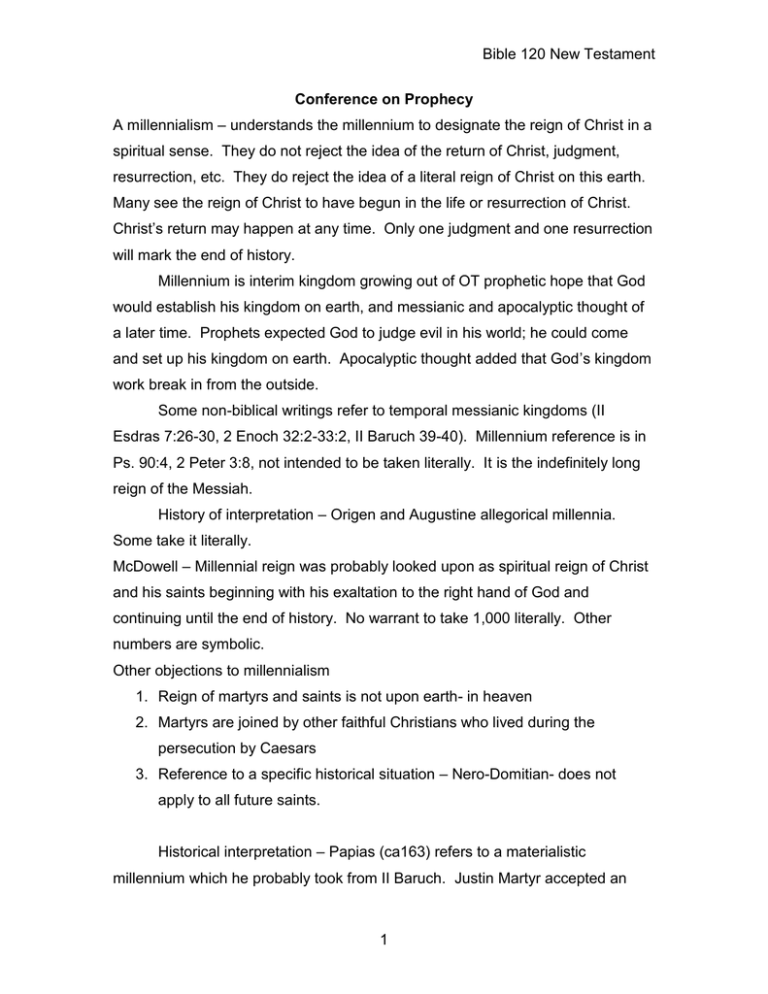
Bible 120 New Testament Conference on Prophecy A millennialism – understands the millennium to designate the reign of Christ in a spiritual sense. They do not reject the idea of the return of Christ, judgment, resurrection, etc. They do reject the idea of a literal reign of Christ on this earth. Many see the reign of Christ to have begun in the life or resurrection of Christ. Christ’s return may happen at any time. Only one judgment and one resurrection will mark the end of history. Millennium is interim kingdom growing out of OT prophetic hope that God would establish his kingdom on earth, and messianic and apocalyptic thought of a later time. Prophets expected God to judge evil in his world; he could come and set up his kingdom on earth. Apocalyptic thought added that God’s kingdom work break in from the outside. Some non-biblical writings refer to temporal messianic kingdoms (II Esdras 7:26-30, 2 Enoch 32:2-33:2, II Baruch 39-40). Millennium reference is in Ps. 90:4, 2 Peter 3:8, not intended to be taken literally. It is the indefinitely long reign of the Messiah. History of interpretation – Origen and Augustine allegorical millennia. Some take it literally. McDowell – Millennial reign was probably looked upon as spiritual reign of Christ and his saints beginning with his exaltation to the right hand of God and continuing until the end of history. No warrant to take 1,000 literally. Other numbers are symbolic. Other objections to millennialism 1. Reign of martyrs and saints is not upon earth- in heaven 2. Martyrs are joined by other faithful Christians who lived during the persecution by Caesars 3. Reference to a specific historical situation – Nero-Domitian- does not apply to all future saints. Historical interpretation – Papias (ca163) refers to a materialistic millennium which he probably took from II Baruch. Justin Martyr accepted an 1 Bible 120 New Testament earthly millennium but confessed that many others did not. In Alexandria 3 rd century materialistic Chiliasm was condemned by Origen and Dionysius. Augustine in City of God: binding of Satan is nothing more than binding of a strong man by the stronger man (Mark 3:27, Luke 11:22). The 1,000 year reign of saints, course of kingdom of Heaven; judgment binding and loosing of sinners; 1st resurrection of a spiritual share in the Resurrection of Christ which belongs to baptized. The 1,000 years is the messianic reign. The view was held by ancient interpreters after Augustine who followed him. Irenaeus believed in earthly millennium. Later chialists went to sensual extremes in what would be enjoyed. Later scholars reacted against this, against Montanist abuses, and interpreted non-millenarian-Origen, Augustine. John taught a literal millennium but its meaning may be realized in something other than a temporal fulfillment. Swete – Millennium – Jewish background in expectations of Messianic reign, a temporal Golden Age; varying periods assigned to this Golden Age; Enoch divided human history into weeks which were 1,000 years in duration. John uses OT background, adopts symbolical term of 1,000 years. But he does not refer to a reign upon earth. Justin Martyr and Tertullian apparently accepted a literal interpretation of 1,000 years. But other Christians did not accept the chiliastic interpretation of revelation. At Alexandria in 3rd century, Origen and Dionysius condemned the materialistic chiliasm. Augustine made first serious effort to interpret it: binding of Satan is binding of strong man (Mark 3:27, Luke 11:22), the 1,000 years is internal between the Advent and last conflict; reign of saints is entire course of the Kingdom of Heaven; judgment given to them is binding and loosing of sinners; in first resurrection, the spiritual share in the resurrection of Christ which belongs to the baptized (Col. 3:1). 2 Bible 120 New Testament Modes of Interpretation Futurist school – regards revelation at dealing with events related to the end of the age. Unfulfilled prophecy. Continuous Historical School - Revelation as symbolic prophecy of future history of the church. It sees Roman Catholic Church as the beast which has apostatized form through Christianity. Philosophy of History School – disregards the historical background of the book. It holds that Revelation deals with principles by which God deals with men through the ages. Preterist School – Esoteric book, except final judgment and pictures of heaven, was fulfilled in the days of the Roman Empire. This view is strong among Roman Catholics who could refute those who interpret Revelation in terms of an apostate church. Historical background School – historical environment for the book. Set in Roman persecution of Christians in Asia. Book was intended for their comfort and encouragement, but its principles apply to Christians anytime who suffer for their faith. Symbols Writer takes imagery of David and adopts it to Christian meaning or setting. Some symbols are heart, numerology – 1 is unity, independence, 2 is stronger than one; 3 is divine; 4 is world or cosmos; 10 is human completeness. 7 X 10=70 a very sacred number. 10 X 10 X 10 equals 1,000, a number of unquestionable completeness. 7 is most sacred number. 12 is symbol of organized religion. 12 X 12 X 1,000 is 144,000 which is vast, complete multitude of faithful servants. 3 ½ equals incompleteness, indefiniteness, dissatisfied. 6 is one short of seven or sinister. Message: at the end of the age Christ will triumph. 3
